“Biennale” refers to the international art event held every two years. Based on different countries’ development and organization over these years, the notion of “Biennale” and its practices are not fresh anymore. In a contemporary context, besides focusing on the present (the “here and now” ) where the cultural events take place and their effect of “spectacularisation of the everyday”, because of its site-specificity, those cultural events may refer back to produce or frame the history of the site and communities’ collective memory. [1]
On 12 December, “Harmo-power: The First Jinan International Biennale” was officially launched in Shandong Art Museum. As the first Biennale organized by the government, the exhibition invited Professor Fan Di’an, Chief of China Artists Association and President of CAFA, and Zhang Wang, Director of Shandong Art Museum as the chief curators. Meanwhile, also invited were Dr. Tayfun Belgin, Director of the Hagen Ossos Museum, Hans De Wolf, Professor of Brussels Free University (VUB), and Wonseok Koh, chief curator and Head of the Exhibition Division of Seoul Museum of Art, to form the international curatorial team. In addition, Yu Yang, Professor of CAFA, Yang Wei, member of the Curatorial Committee of the China Artists Association, Sun Lei, Deputy Dean of the School of Fine Arts at the Shandong University of Arts, Xu Lin, Deputy Curator of Jinan Art Museum, and independent curator Li Zhenhua, were invited to form the domestic curatorial team.

View of the Opening Ceremony

Honored guests and children from all over the world started the exhibition on the same stage.
By featuring the theme of “Harmo-power”, the Biennale invites 385 artists from 30 countries and regions, to present 596 (pieces) works of art in total.
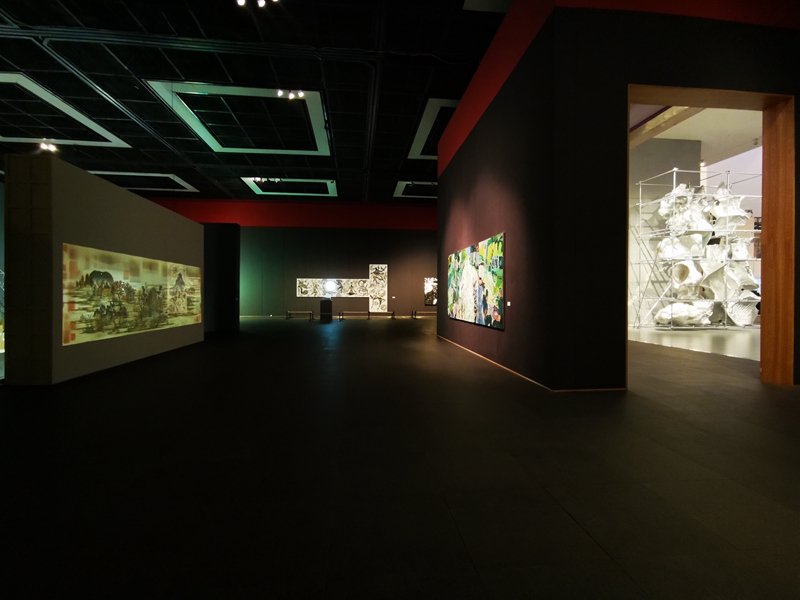
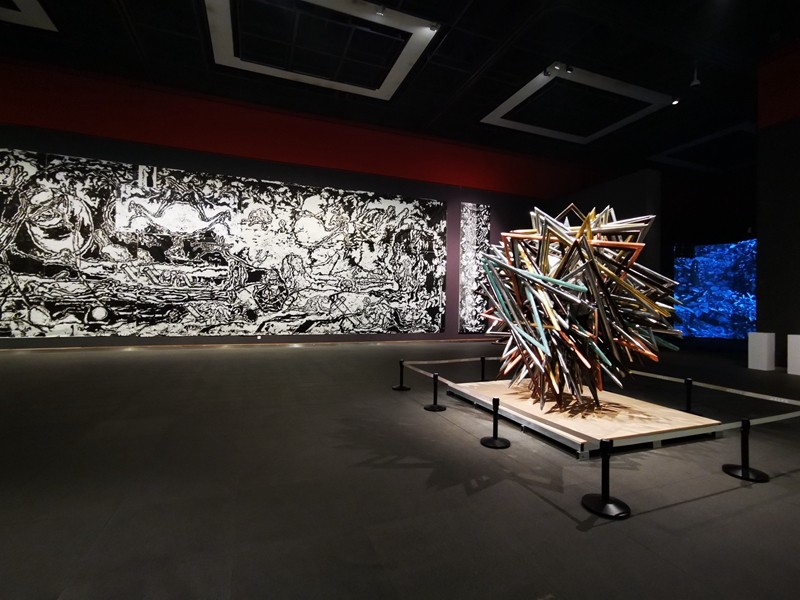
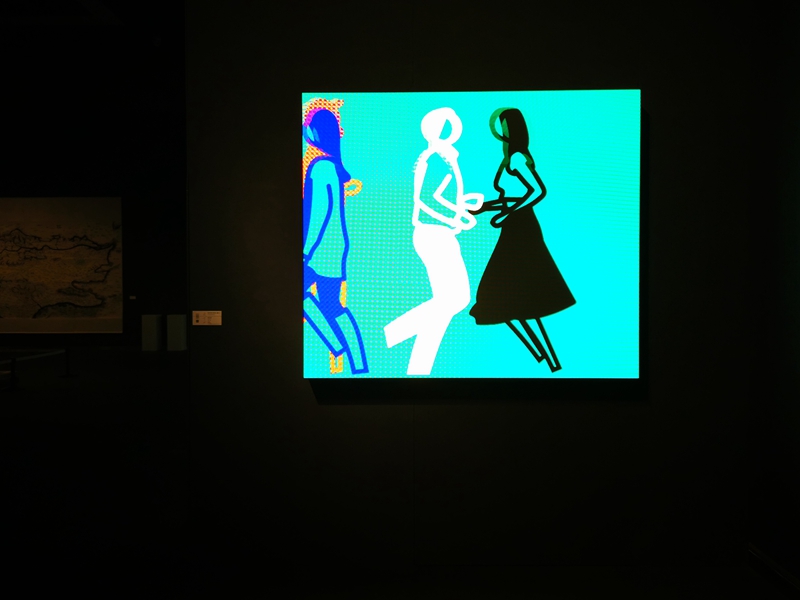
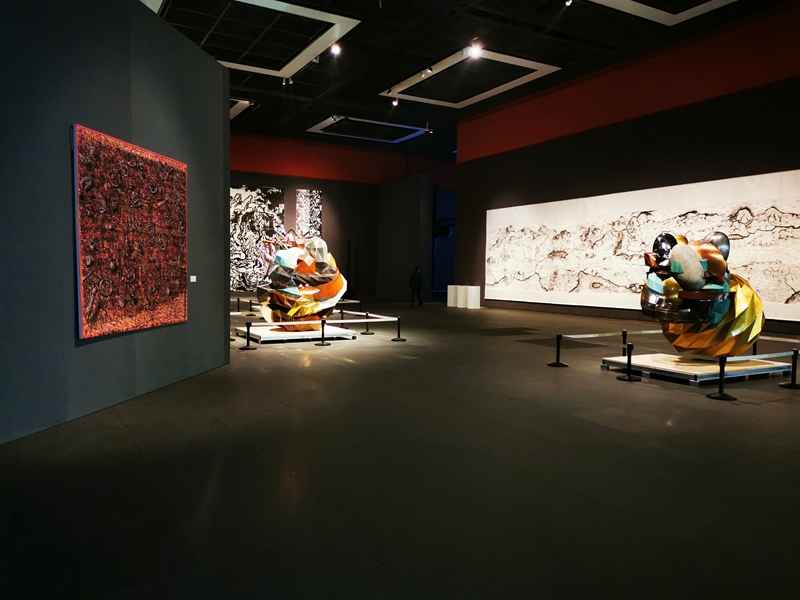
Exhibition View ©CAFA ART INFO
“Harmony Generates and Sameness Stifles Vitality”
—How to understand Harmo-power?
In the Chinese context, the notion of “Harmony” (CN.和) concludes a significant value of traditional Chinese cultural spirit. Instead of referring to the sameness, harmony reflects tolerance in variety. In this case, it matches the appearance of increasingly diversified contemporary art. In the special time period of the year 2020, the whole world is confronting the challenge brought up by the pandemic. Holding such an international biennale at this moment cannot only explore issues such as the contemporary transformation of contemporary art, the contemporary expression of art, etc. but also intends to promote the construction of a community with a shared future for mankind.

Fan Di’an, Chief of China Artists Association and President of CAFA, delivered a speech.
Fan Di’an, President of CAFA, addressed in the speech for the opening ceremony of the exhibition that, in the special year of 2020, the holding of “Harmo-power: The First Jinan International Biennale” can be understood as an artistic expression of China's major strategic achievements in fighting the pandemic, and it also offers a broad platform for international art exchanges built by Shandong. Excellent artists from all over the world sent their latest creations to Shandong Art Museum for the exhibition, which reflects the artists’ cultural consensus on the theme of “harmony”. Shandong is the birthplace of Confucianism, and “harmony” is its core concept. It includes multiple dimensions such as the harmony between humans and self, humans and society, and humans and nature. It also refers to mutual tolerance and understanding between different cultures. How the connotation of “harmony” becomes the driving force of today's artistic creation is a topic to be discussed in this biennale. Meanwhile, the exhibition aims to bring together works in different languages and different forms to produce a rich visual scene, spread the excellent spirit of Chinese culture to the world, and lay a solid cultural foundation for building a community with a shared future for people.

President Fan Di’an and Zhang Wang, Director of Shandong Art Museum and Chief of Shandong Artists Association, recalled the whole process of exhibition organization and planning.

Wang Lei, Party Secretary and Director of the Shandong Provincial Department of Culture and Tourism, delivered a speech.

Yang Feng, Member of the Standing Committee of the Jinan Municipal Party Committee and Minister of the Propaganda Department, delivered a speech.

Hans De Wolf, Professor of Brussels Free University (VUB), as the representative of international curators, delivered a speech via video.
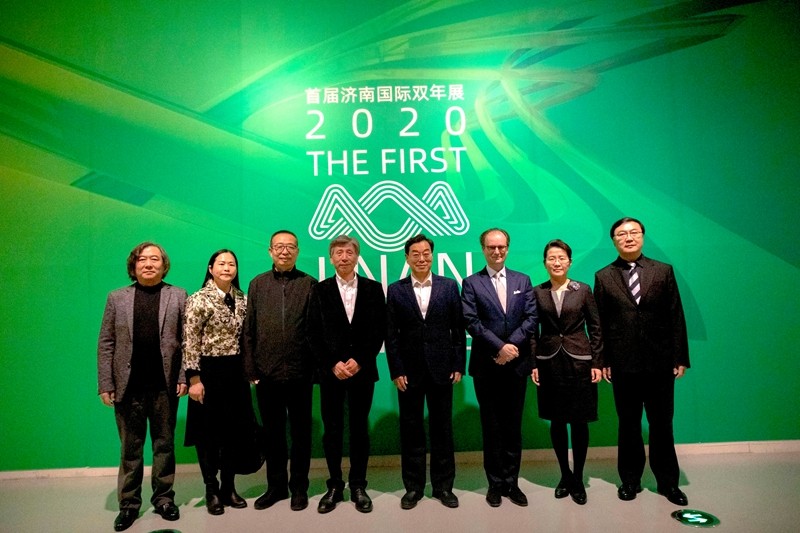
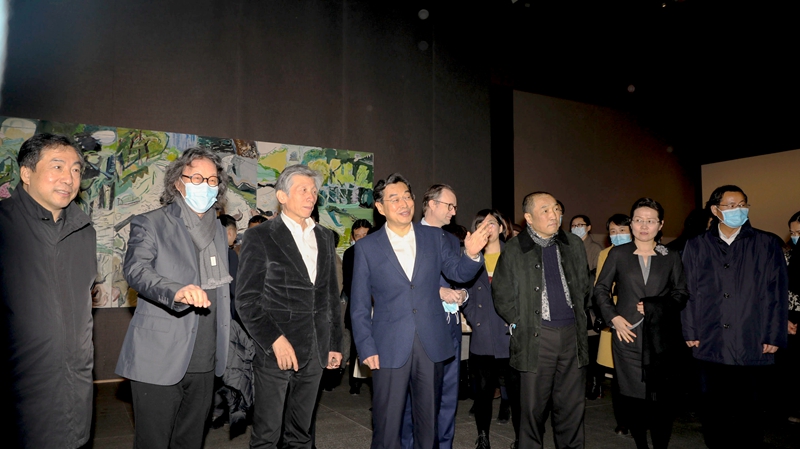
Honored Guests viewed the exhibition.
On the afternoon of the 12th, “Harmo-power—The Academic Seminar of the First Jinan International Biennale” was held in the conference room on the 4th floor of the Shandong Art Museum. The seminar invited guests with rich identities and backgrounds such as exhibition organizers, art critics, art theorists, museum directors, curators, and artists to participate. Moving forward from significance and influence, the seminar carried out interpretations and discussions from multiple perspectives on topics such as Chinese traditional culture and contemporary art innovation, the creative transformation and innovative development of the language of traditional art concepts, and the contemporary significance of art museums in regional cultural development.

View of the Seminr
In regards to the interpretation of “Harmo-power”, Niu Kecheng, Director of Fine Arts Research Institute of Chinese National Academy of Arts, mentioned the three perspectives of understanding the notion of harmony is President Fan Di’an’s viewpoint, namely, the harmony between humans and nature, the harmony between humans and society, as well as the harmony between various civilizations. In addition, Director Niu Kecheng mentioned that the “harmony” in Confucian culture also emphasizes the harmony between human beings, nature and society. Although it is a stable and introverted state, it can produce motivation. Through the form of art, biennales and seminars at present, art, in its unique form, plays a role in the process of building a global community with a shared future.
Professor Yu Yang holds the view that energy is hidden behind the meaning of harmony. It presents multiple angles in terms of new and traditional, local and international, etc.. Meanwhile, the word itself elaborates connotations of traditional and contemporary, regional and global. Just as the photographic scroll “A Thousand Miles of the Yangtze River” presented by the American artist Michael Cherney depicts a lifelong experience in China, from his personal feelings and expressions with an international perspective, the Yangtze River is shown as “a place carrying huge historical and cultural memories.” (Michael Cherney) With the subtle creation and presentation, the traditional landscape scroll and the current urban reality are subtly combined.

Michael Cherney, “A Thousand Miles of the Yangtze River”, Handscrolls, photographic print on Japanese mitsumata washi paper
Exhibition View ©CAFA ART INFO
Regarding the understanding of harmony, Professor Yang Wei believes that the concept of “harmony in diversity” in Chinese culture contains differences, which generally summarizes the diversification of contemporary art today. At the same time, when talking about “harmony”, we are also discussing world issues from the perspective of the ontology of Chinese culture, which is a very important turning point for this exhibition. In addition to the interpretation of “harmony”, Sun Lei, Deputy Dean of the School of Fine Arts at the Shandong University of Arts, emphasized a kind of “touchability” behind the driving force, which aims to realize touching the works through eyes.
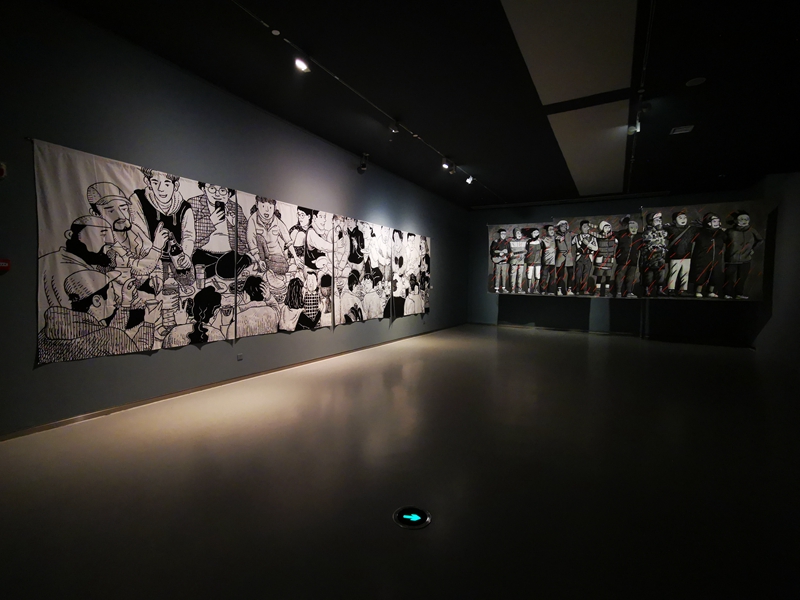
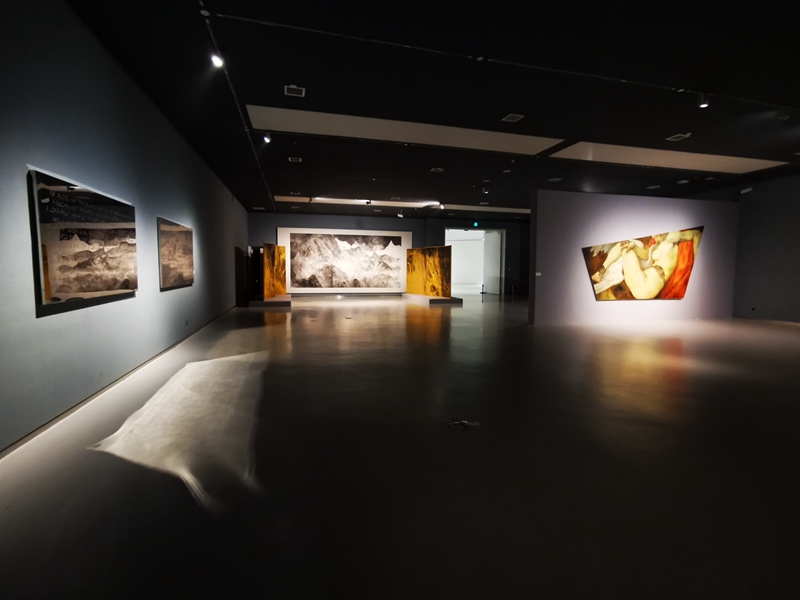
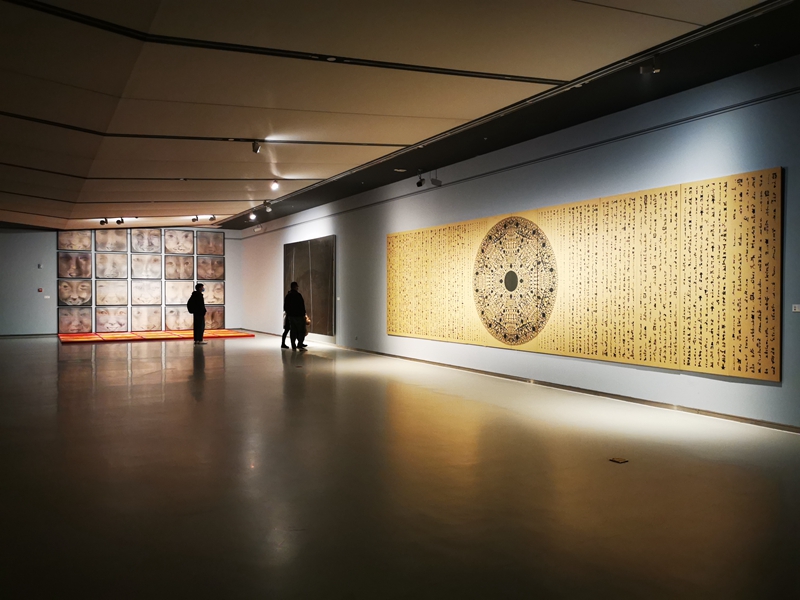
Exhibition View ©CAFA ART INFO
Tradition, Contemporary and Innovation
—How do biennials and art museums activate regional culture?
The understanding of Shandong's profound historical heritage and traditional context, and how to seek innovation and breakthroughs in such a traditional soil, is another focus of this biennale and seminar. Director Zhang Wang believes that Shandong, as a large province of culture and art, is huge and rich in terms of art practitioners, art markets, art collections, as well as art students. At the same time, the characteristics of traditional culture and the system in Shandong have more or less caused Shandong's lack of artistic innovation, new formats and artistic frontier trends. Therefore, it urgently needs to build an exhibition brand with academic value. As a result, the biennale was finally realized under the pandemic with the effort of many parties.

Exhibition View of Sui Jianguo, “Cloud Garden—Twigs No.2”

Exhibition View ©CAFA ART INFO
As a representative of Shandong artists, Sui Jianguo, a professor in the Sculpture Department of the Central Academy of Fine Arts, proposed that the so-called “conservative” characteristic in Shandong should be re-examined. Starting from art, how should one choose one's own position in cultural construction? On the other hand, cultural attitudes will also inspire artistic creation, leading to the choice of creative concepts. Liu Qinghe, Dean of the School of Chinese Painting at the CAFA, started from his own perspective as an artist focusing on ink art, thinking that the interpretation of traditional symbols in recent years seems to have fallen into a misunderstanding. Shandong is a major province for calligraphy and ink painting. These biennials may remind and change the whole art ecology of Shandong.

Liu Qinghe, “Ice in Deep”, 200×600cm, Ink on Paper
Besides the above topics, the seminar also focused on how the biennale has taken root in Shandong’s cultural soil to achieve contemporary artistic innovation as well as activate regional culture? Wang Like, President of the Shandong University of Arts, believes at this time the artists, the art market, and the government have the most mature understanding of contemporary art. This makes this exhibition closely follow Chinese culture and spirit in terms of work selection and theme planning. It is said that Shandong is at its best time to prepare for the biennale.
Zhang Zikang, Director of the CAFA Art Museum, believes that the successful holding of this biennale will help “establish a common understanding of new values”. On the one hand, this biennale can generate new impetus for the recognition of local art in Shandong, which is specifically reflected in the thinking generated by the artistic creation and the audience viewing the exhibition. For example, the artist Xu Bing’s work “Background Story: Autumn Colors on the Que and Hua Mountains” reshaped Zhao Mengfu’s landscape painting “Autumn Colors on the Que and Hua Mountains”, overturning the interpretation of traditional symbols, reflecting on the tradition with contemporary artistic language and realizing a new understanding of tradition.

Xu Bing, “Background Story: Autumn Colors on the Que and Hua Mountains”, 180×590cm, Mixed Material Installation, Exhibition View ©CAFA ART INFO

Back View of “Background Story: Autumn Colors on the Que and Hua Mountains” ©CAFA ART INFO
In terms of introducing artists from various countries, it facilitates to surpass the traditional art cognition. Such motivation will be further introduced through interactive exhibitions, among others. For example, the large-scale interactive installation of Argentine artist Leandro Erich inspired by Jinan’s iconic architecture Chao Ran Lou Beside Daming Lake. The installation intends to inspire audiences to generate new artistic cognitions, especially the audiences without any art background. By doing so, the positive significance of the promotion of urban innovative thinking can be eventually realized.

Leandro Erlich, “Architecture—Transcendental”, Variable Size, Mirror, Metal Frame Structure, etc.
Exhibition View ©CAFA ART INFO
Wang Shaoqiang, Director of the Guangdong Museum of Art, first emphasized the necessity of a biennial for regional art museums. At the same time, he mentioned that the Jinan International Biennale should continue to be organized to achieve the gradual superposition of academics, artworks, documents, and influence. In the future development process, it can start from the establishment of a research system, the building of the art media promotion system (not only domestic but also the international perspective), and the establishment of the archive and collection system. Hu Wei, the former Deputy Director of the National Art Museum of China, also talked about the sustainability of the Jinan International Biennale. He thinks that the Skulptur Projekte Münster every ten years can be used as a good reference case to learn about it. It gives inspiration regarding how should biennales go deep into cities and regions and connect with the lives of local residents.

George Rickey, “Drei rotierende Quadrate”
Source:https://adorableyuppie.com/
What significance and impact should the biennale have on a city and a region then? Based on his own experience of preparing multiple biennales and constructing corresponding systems, Wang Huangsheng, the former Director of the CAFA Art Museum, believes that the significance of persisting in organizing biennials lies in changing an art system and making it more contemporary. The contemporary connotation should reflect the aspects of curation, collection and the construction of the academic system. In addition, the biennale also involves the contemporary nature of artistic thought, which refers to the generation of contemporary thoughts, knowledge, and the intervention of culture at present. At the same time, the contemporary expression of perspective is also a vital significance of the biennale, which provides more diverse perceptual experiences and visual expression methods than ordinary exhibitions.

Exhibition View of Wang Huangsheng, “Exhale/Inhale Series”, ©CAFA ART INFO
When talking about the significance of biennales, Wang Chunchen, Deputy Director of CAFA Art Museum, started from the concept of the biennale itself, that is, based on the contemporary, thinking about the current issues and everything that comes out of it. After more than 100 years of development, the biennale has evolved into an opportunity to ask questions and reflect on problems independently. The platform of the biennale should not only discuss art or tradition but should activate a collision of ideas and question the current situation.
As President Fan Di’an mentioned in the preface of the exhibition, “We are living in an era of complex images. The distinction between real and virtual has become increasingly blurred. Various art forms and styles are intertwined and merged, while technological progress and materials are renewed into artistic creation, which provides new opportunities and challenges. All of these make us pay more attention to art creations featuring the reshaping of tradition and caring about reality. We also expect that the biennale will achieve a model that faces the present and hopes for the future."
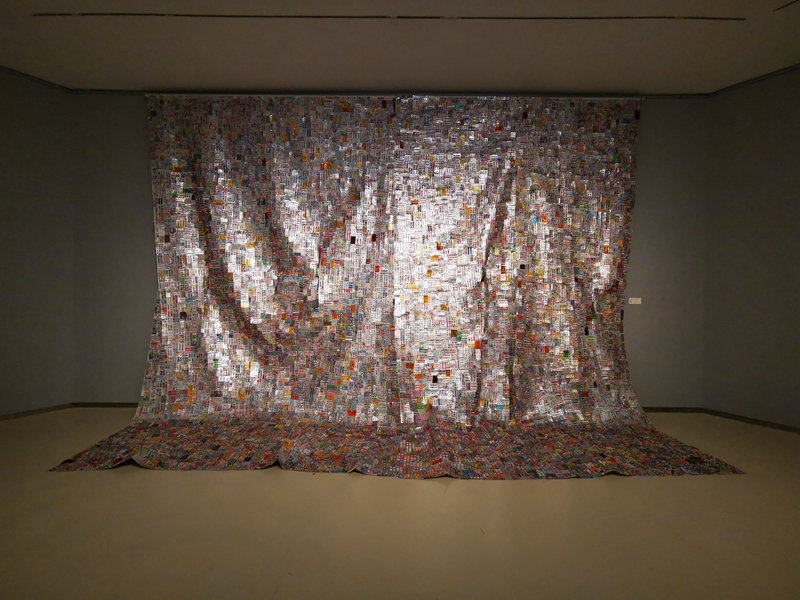
Zhang Yanzi, “Wishing Capsules”, Variable Size, Capsule Foil Board, 2020, Exhibition View ©CAFA ART INFO
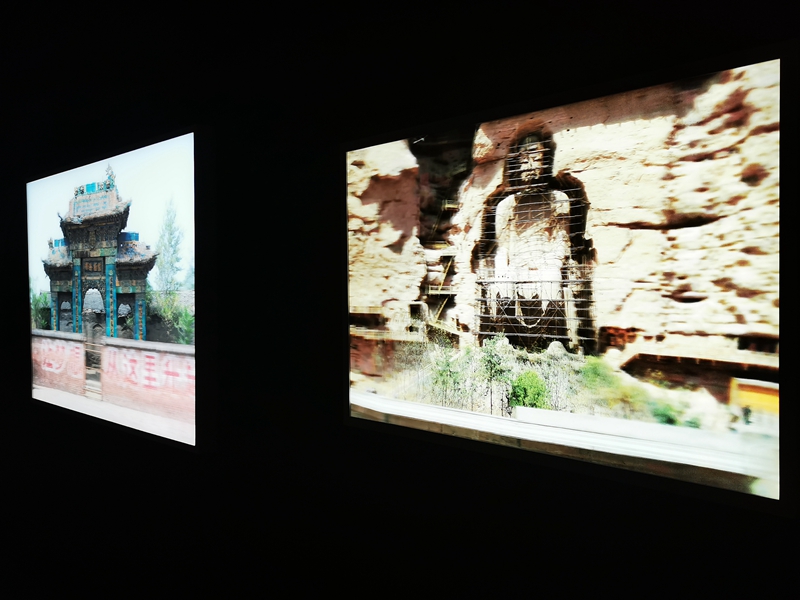
Wang Chuan, “Re-focusing” Series, 105×70×8cm, Grating Light Box, 2020, Exhibition View ©CAFA ART INFO

Chen Shuxia, “The Mountain behind”, Oil on Canvas 472×116cm×4, 2019
The 2020 1st Jinan International Biennale is divided into three sections: the nominated artists’ works for the Shandong Art Museum, the shortlisted emerging curators’ project at the Jinan Art Museum, and an online exhibition of the shortlisted emerging curators’ projects.
It is reported that the exhibition will be open to the public from 13 December 2020 to 12 March 2021.
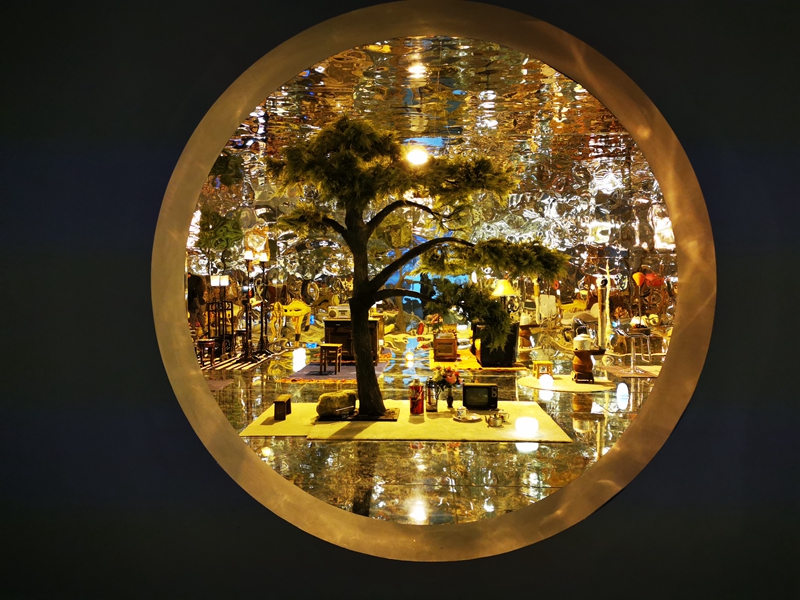
Song Dong, “No Man is An Island”, Variable Size, Mirror, Carpet, Exhibition View ©CAFA ART INFO
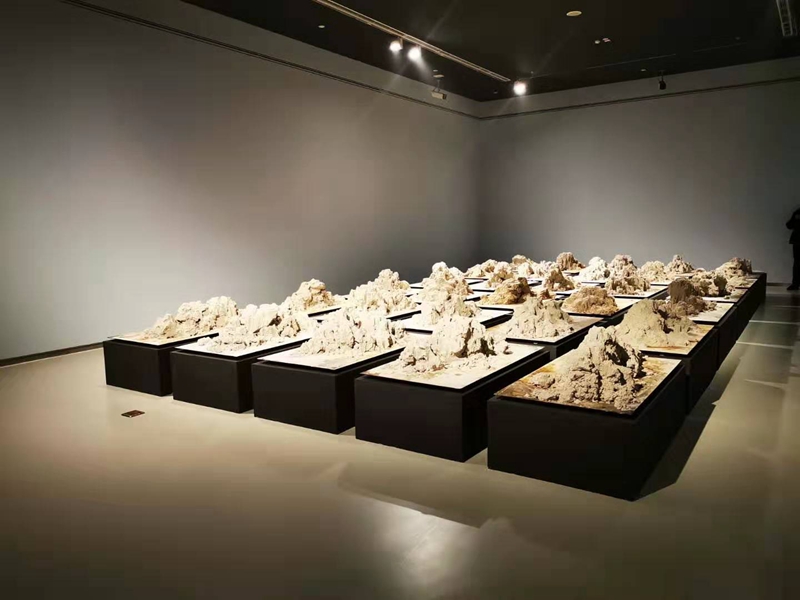
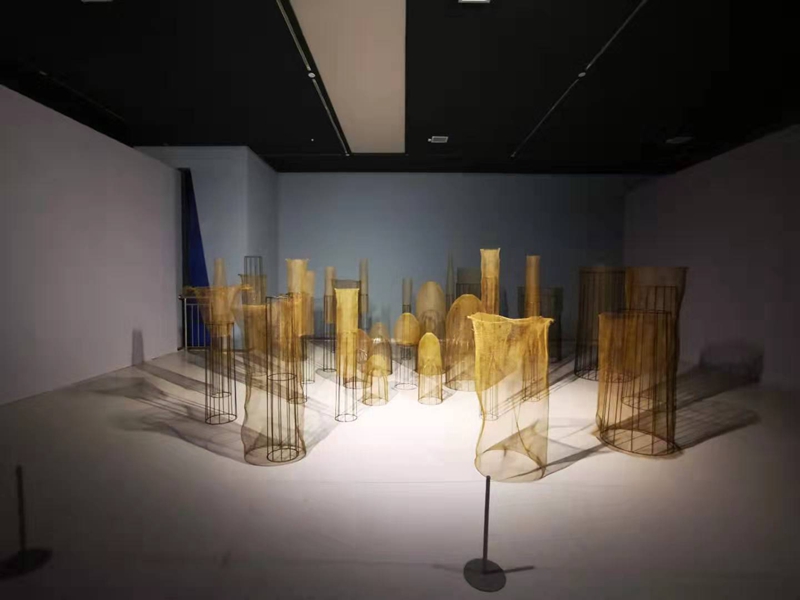
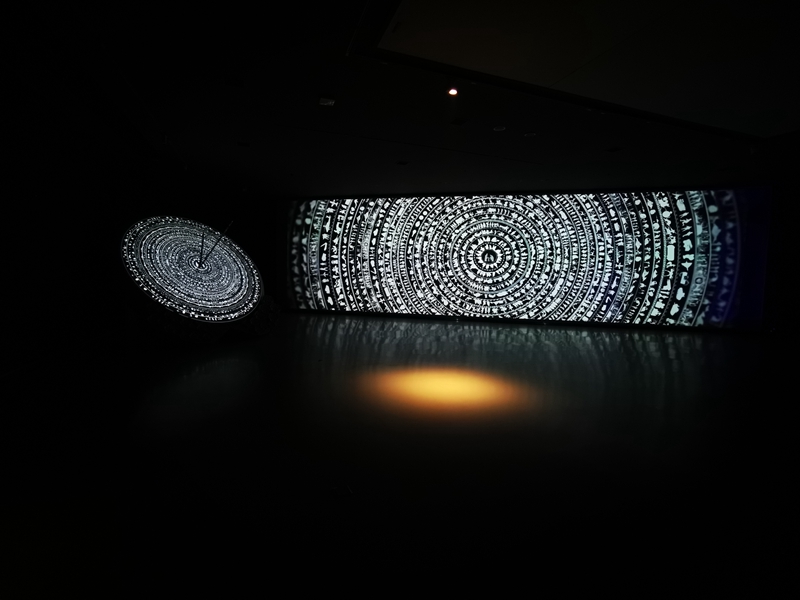

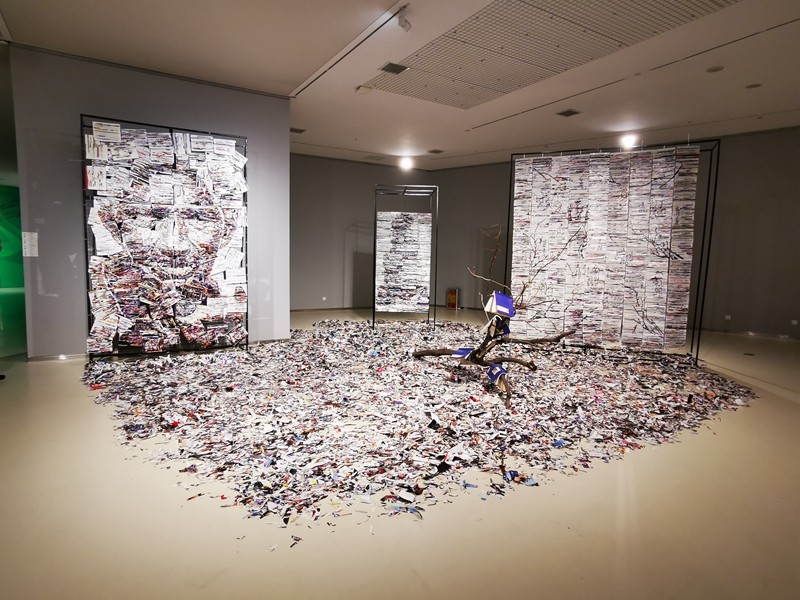
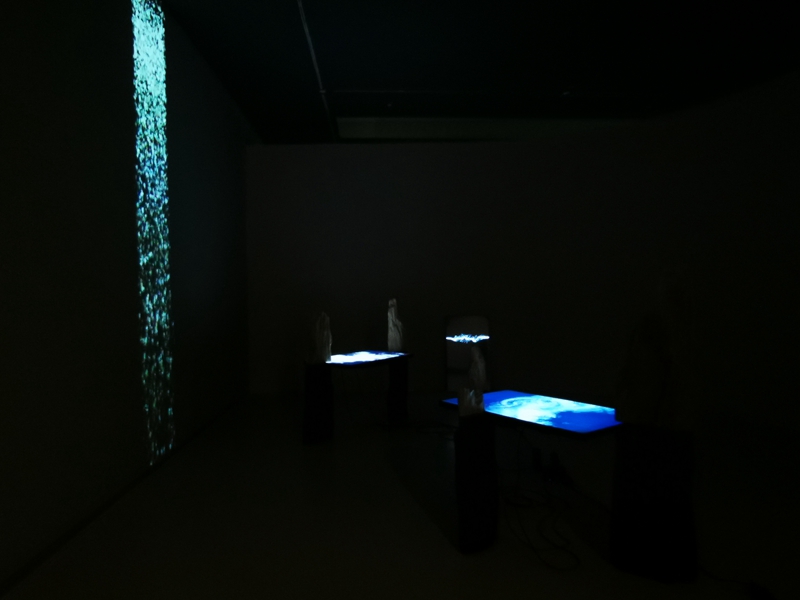
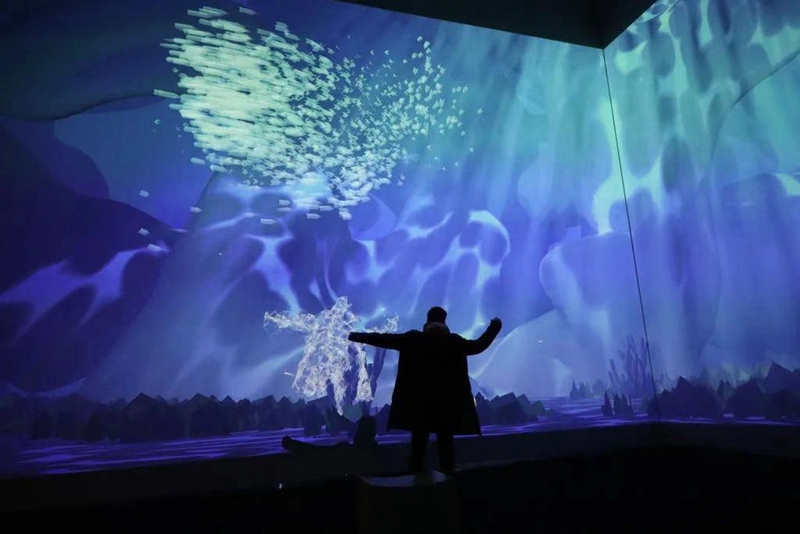
Exhibition View ©CAFA ART INFO
Note:
[1] Federica Martini and Vittoria Martini, Just Another exhibition: Histories and Politics of Biennials, Postmedia Books, 2011.
Text by Emily Weimeng Zhou
Edited by Sue/CAFA ART INFO
Image and background materials courtesy of the organizer except for special annotations.




























